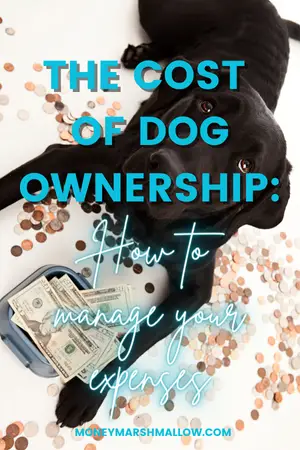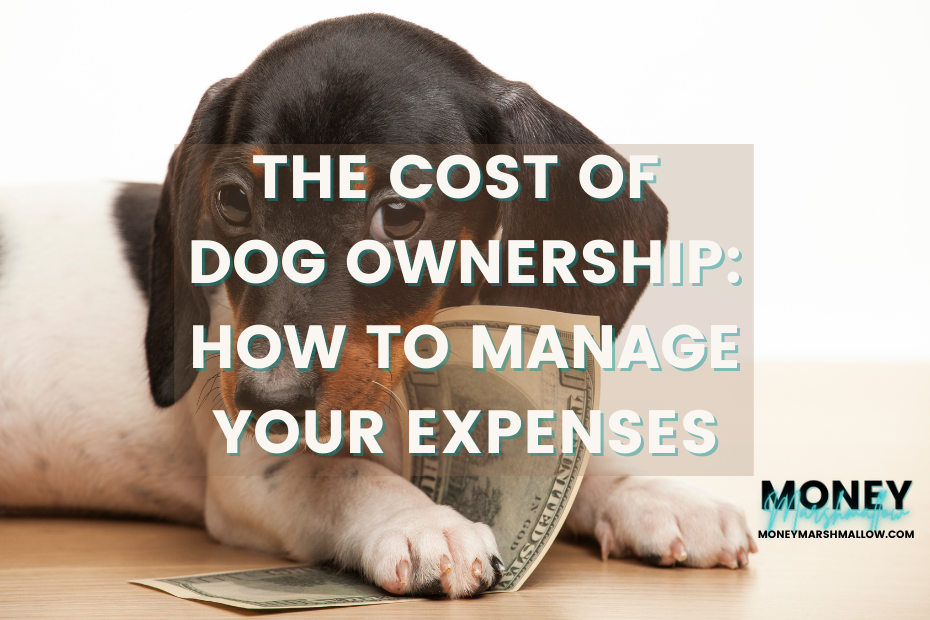Dog ownership is a popular and rewarding experience for many people in the UK. However, it’s important to understand that having a dog comes with a significant financial commitment. From food and healthcare to grooming and training, the cost of dog ownership can quickly add up. In this article, we will explore the various expenses associated with owning a dog in the UK and provide some interesting statistics to give you a better understanding of the true cost of dog ownership.
How much does having a dog cost?
Did you know that according to a recent survey, the average dog parent in the UK spends over £1,500 a year on their furry friend? This includes expenses such as food, treats, toys, grooming, vet bills, and insurance. In addition, the initial cost of purchasing or adopting a dog can also be significant, with some breeds costing thousands of pounds. Furthermore, it is estimated that over a dog’s lifetime, the total cost of ownership can easily exceed £10,000.
Let’s take a look at a breakdown of the main expenses when it comes to dog ownership.
The cost of acquiring a dog
Getting a furry friend is an exciting prospect, but it’s important to remember that the cost of bringing a dog into your life can be quite high.
- Adoption fees: Adopting a dog from a local animal shelter or rescue can cost anywhere from £50 to £250. Adopting a dog is not only cheaper, but it also gives you the chance to provide a loving home to a pet in need.
- Buying from a breeder: Buying a dog from a reputable breeder can be expensive, with prices ranging from £500 to £4,000 or more. It’s essential to do your research to find a responsible breeder who follows ethical breeding practices.
The cost of dog food and supplies
The cost of food and supplies has one of the biggest financial impacts on pet parents and it can also vary based on your dog’s size and needs.
- Food: The cost of dog food varies depending on the brand, type of food, and your dog’s size and needs. On average, you can expect to spend anywhere from £20 to £50 per month on food.
- Treats: Giving your dog treats can be a fun way to reward good behaviour or just show your love. Treats can cost anywhere from £5 to £20 per month.
- Toys: Dogs love to play, and having toys to play with can help keep them mentally stimulated and happy. The cost of toys can range from £10 to £50 per month.
- Bedding: Providing your dog with a comfortable place to sleep is important. The cost of bedding can range from £20 to £100, but it’s a one-time cost that will last for years.

The cost of veterinary care
As a responsible pet parent, it’s important to consider the cost of veterinary care for your furry friend. From routine check-ups and vaccinations to unexpected illnesses and injuries, the cost of healthcare for pets can add up quickly. The vet costs can vary depending on things such as location and the size of your dog. Here are some estimated costs to consider:
- Routine checkups: Regular checkups with a veterinarian are essential to keeping your dog healthy. The cost of a routine checkup can range from £50 to £100. The RSPCA advises taking your dog for yearly health checks.
- Medicine: In addition to routine checkups, your dog might need additional treatments or medicine to treat different health issues. For example, the cost of treating a common illness such as an ear infection can range from £100 to £300. In addition, preventative treatments such as flea and deworming medication can cost around £20-£30 per treatment.
- Vaccinations: Vaccinations are necessary to keep your dog protected from diseases. The cost of vaccinations can range from £30 to £60 each.
- Spaying or neutering: Spaying or neutering your dog is an important part of responsible pet parent. The cost of spaying or neutering can range from £200 to £400.
- Dental cleaning: Dental care is important for your dog’s overall health. The cost of dental cleaning can range from £150 to £400.
- Emergency care: Emergency veterinary care can be expensive, with costs ranging from £500 to £2,000 or more. It’s essential to be prepared for unexpected veterinary expenses by having a plan in place, such as pet insurance.
Other costs of dog ownership
In addition to the costs mentioned above, here are some other expenses to consider:
- Training classes: Taking your dog to training classes can be an excellent way to help them learn new skills and behaviours. The cost of training classes can range from £50 to £200 per class, depending on the location and the type of training.
- Grooming: Regular grooming is essential to keep your dog’s coat healthy and clean. The cost of grooming can range from £30 to £100 per session, depending on your location and the services provided.
- Boarding or pet-sitting: If you need to travel or can’t be home with your dog, boarding or pet-sitting services may be necessary. The cost of boarding or pet-sitting can range from £10 to £50 per day, depending on the location and services provided.
- Insurance: Pet insurance is a popular option for many dog owners in the UK to help offset the costs of veterinary care. The cost of pet insurance can vary depending on factors such as the age and breed of your dog, as well as the level of coverage you choose. Basic plans may start at around £5-£10 per month, while more comprehensive plans with higher coverage limits can cost upwards of £50 per month.

How can you reduce costs?
The good news is that there are plenty of ways to reduce expenses without compromising on the care and happiness of your dog. In this section, we’ll explore some creative and practical ideas to help you save money on pet-related expenses, from finding affordable food and supplies to saving money on veterinary services. By implementing some of these cost-saving strategies, you can enjoy the benefits of having a pet without breaking the bank.
1. Choose a low-maintenance dog breed
Some dog breeds are higher maintenance than others, requiring more time, effort, and money to keep them healthy and happy. High-maintenance breeds include those with long, thick coats that require frequent grooming, such as the Afghan Hound or the Poodle. Breeds prone to health issues, such as the Bulldog or the Shar Pei, may also require more frequent veterinary care. On the other hand, low-maintenance breeds include those with short, smooth coats that require minimal grooming, such as the Beagle or the Boxer. Breeds with fewer health issues, such as the Australian Cattle Dog or the Dalmatian, may also require less frequent veterinary care.
2. Buy in bulk
Buying dog food, treats, and other supplies in bulk can save you money in the long run. Look for deals and discounts at pet supply stores or consider purchasing online from retailers that offer free shipping on larger orders.
3. Make your own dog treats and toys
Making your own dog treats and toys is a fun and creative way to save money. You can find many recipes online for homemade dog treats using simple ingredients such as peanut butter, oatmeal, and pumpkin. You can also make your own toys using household items such as old t-shirts or socks.
4. Consider pet insurance
Pet insurance is an excellent way to protect yourself from unexpected veterinary expenses. There are many different types of pet insurance policies available, so be sure to research the options and choose a policy that fits your budget and your pet’s needs.
5. Practice preventative care
Taking preventative measures can help you avoid expensive veterinary bills down the road. This includes keeping your dog up-to-date on vaccinations, maintaining good dental hygiene, and scheduling routine checkups with your veterinarian.
6. Train your dog yourself
Instead of paying for professional dog training classes, consider training your dog yourself. There are many resources available online and at the library that can help you learn how to train your dog. You can also use positive reinforcement techniques such as rewarding good behaviour with treats or praise.
7. Look for free or low-cost services
Many animal shelters and rescue organizations offer free or low-cost services such as spaying/neutering, vaccinations, and microchipping. These services can help you save money while still providing your dog with essential care.
Conclusion: The cost of dog ownership
Owning a dog is a rewarding experience, but it’s important to understand the costs involved. However, by setting savings goals and creating a budget, you can manage these expenses and provide your furry friend with the care they deserve. Start by breaking down the most significant expenses and considering ways to decrease costs. This will allow you to manage your finances while still providing a happy and healthy life for your furry friend.

This guest post was provided by Pavel Gertsberg, the CEO of Fluffy. Fluffy is on a mission to make pet care less stressful and more affordable. With Fluffy pet parents get comprehensive insurance coverage, dog training from world-leading experts and 24/7 unlimited vet support.
